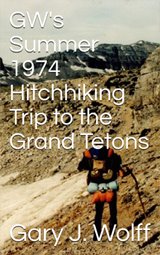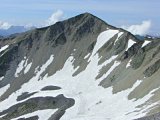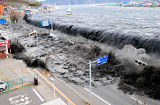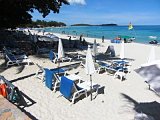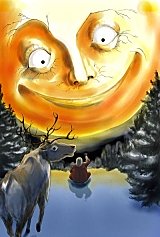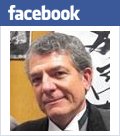|
Search this
site:
Home:
Strongest
Ever Japan Earthquake and Tsunami: News updates
for April 2-8, 2011
Strongest Ever Japan Earthquake
This page is a continuation of my main Strongest
Ever Japan
Earthquake and Tsunami
page, reflecting April 2-8, 2011 news updates for the
4th week after
the initial quake. Thanks so much for your
concern, and please remember in your thoughts and prayers those
thousands of people who are
suffering right now and haven't heard from their missing
family
members. |
|||
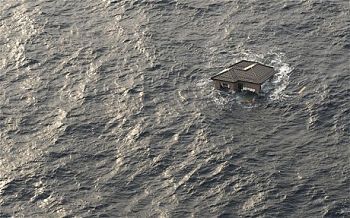 |
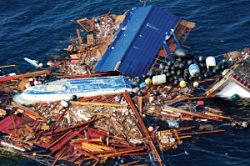 |
April 8, 2011 20:45 (JST): Are you prepared to "Shelter-in-Place" in a Radiation Emergency? - In the event of a radiation emergency, such as a nuclear power plant accident or the explosion of a dirty bomb, you may be asked to stay home and take shelter rather than try to evacuate. This action is called "sheltering in place." Because many radioactive materials rapidly decay and dissipate, staying in your home for a short time may protect you from exposure to radiation. The walls of your home may block much of the harmful radiation. Taking a few simple precautions can help you reduce your exposure to radiation. The Centers for Disease Control and Prevention has prepared this fact sheet to help you protect yourself and your family and to help you prepare a safe and well-stocked shelter. More...
April 8, 2011 18:20 (JST): Japanese show self-restraint during cherry blossom season - It is cherry blossom season in Japan and in a normal year the open space under the trees would be covered with blue tarpaulin sheets, every square inch taken up with people eating and drinking. But in the face of calamity the Japanese have adopted a mood of self-restraint. This is not the year for partying. Just a handful of people were sitting under the cherry blossom in Tokyo's Ueno Park, and most were somber. A month after Japan's earthquake and tsunami and the subsequent nuclear crisis, the country has entered a period of what is known as "jishuku," or voluntary self-restraint. Out of solidarity with those in disaster-hit areas people across the country are making cut-backs. More...
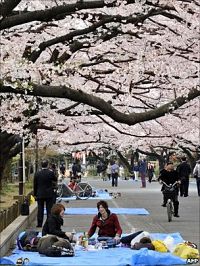
Far fewer people gather under the
cherry blossoms in Tokyo's Ueno Park this year
April 8, 2011 17:00 (JST): Thurs. aftershock batters other nuclear plants - Nuclear power plants and related facilities in the coastal areas of northeastern Japan were forced to rely on emergency power after their electricity was cut off in Thursday night's M7.4 intensity 6+ quake. Operations have been suspended at all nuclear power plants from Aomori to Ibaraki prefectures since the March 11th earthquake and tsunami. But electricity is still crucial to keep their cooling systems operating. Japan's nuclear agency says all external power lines at Higashidori nuclear power plant in Aomori Prefecture were knocked out in Thursday's quake. (Source: nhk.or.jp)
April 8, 2011 15:35 (JST): Tokyo Radiation Presentation, Tokyo American Club, April 7, 2011, 1 pm - In the midst of the continuing Fukushima nuclear power plant crisis, leading medical experts addressed food safety, water safety, and radiation. Panelists included Dr. Norman Coleman of the National Cancer Institute, Capt. Michael A. Noska of the U.S. Public Health Service, and Dr. Steven L. Simon of the National Cancer Institute. The 45-min. Part 2 video of the Q&A session is here.
"The likely increase in radiation-related fatal cancer risk in Tokyo -- given
present dose information -- is so close to zero as to be indistinguishable."
(around the 44:00 min. mark)
April 8, 2011 6:10 (JST): Powerful quake strikes northeastern Japan - A magnitude 7.4 quake occurred off the Miyagi coast, northeastern Japan late Thursday night. The Meteorological Agency says the quake registered 6-plus on the Japanese seismic scale of 0 to 7 in Sendai and another place in Miyagi prefecture. It says an intensity of 6-minus was registered in wide areas of Miyagi and Iwate prefectures, and that the quake was felt in many regions across Japan. The agency estimates the focus of the quake was 40 kilometers below ground. (Source: nhk.or.jp)
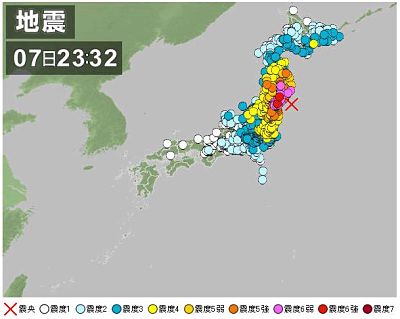
April 8, 2011 1:20 (JST): Israel gives temporary clinic to quake-hit town - Israel will donate a clinic to tsunami-devastated Minami Sanriku town in Miyagi Prefecture when its emergency medical team ends its mission. All the hospitals and clinics in the town have been damaged in the massive March 11 quake and tsunami. The Israeli government on March 29 built a makeshift clinic in a shelter to treat survivors. It has informed the town that it will donate the clinic made of 6 pre-fabricated buildings and all its medical equipment on Sunday when the Israeli team completes its emergency rescue work. (Source: nhk.or.jp)
April 7, 2011 23:20 (JST): Asakusa sees sharp drop in foreign tourists - Visitors from overseas have all but disappeared from Tokyo's Asakusa district in the wake of the nuclear crisis following the March 11 quake and tsunami. The downtown district of Asakusa is a major tourist attraction that draws around 30-million visitors every year, half of them foreigners. But now, those visiting Sensoji Temple and the avenue of stalls leading up to the temple are mostly Japanese. Individual travelers from the United States and Europe are starting to come back in the past several days. But the group tours from China and South Korea that used to crowd the site are nowhere to be seen. (Source: nhk.or.jp)
April 7, 2011 18:35 (JST): Tsunami-hit towns forgot warnings from ancestors - Modern sea walls failed to protect coastal towns from Japan's destructive tsunami last month. But in the hamlet of Aneyoshi, a single centuries-old tablet saved the day. "High dwellings are the peace and harmony of our descendants," the stone slab reads. "Remember the calamity of the great tsunamis. Do not build any homes below this point." It was advice the dozen or so households of Aneyoshi heeded, and their homes emerged unscathed from a disaster that flattened low-lying communities elsewhere and killed thousands along Japan's northeastern shore. More...
April 7, 2011 10:15 (JST): Yomiuri Giants slugger Ramirez donates $1 million to quake/tsunami victims - Alex Ramirez recently pledged to donate $1 million to disaster relief efforts, but he isn't stopping there. "The other thing is, we're going to get some T-shirts, my T-shirts, about 1,000, and whatever we sell, all that money is going to be donated to the same organization to help those people," Ramirez said. Ramirez has also been working with doctors in order to get medical supplies sent to the disaster areas. Another thing Ramirez plans to do is to send the region messages of support throughout the season, using his fan-friendly post-home run performances. "The (after home run) performance I put together this year is going to be something like, 'We are one, Ganbaro Nippon.' That is probably what I'm going to do this year." (Source: Japan Times)

Photo by Satoko Kawasaki
April 7, 2011 5:55 (JST): 1000 school bags for children donated - A bag retailer in Tokyo has donated 1,000 school bags for elementary school children in a tsunami-stricken city in northeastern Japan. The company sent the bags after learning the children in Ishinomaki City, Miyagi Prefecture, had been left without stationery and other school supplies. A truck carrying the school bags and other relief goods left Tokyo on Wednesday morning and will arrive in Ishinomaki late the same day. (Source: nhk.or.jp)
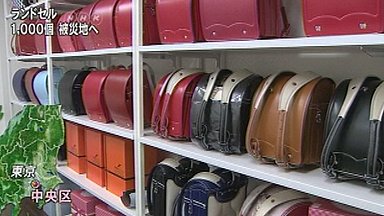
April 7, 2011 2:40 (JST): US marines finish clean-up on remote island - US Marines finished clearing debris on a remote Japanese island off disaster-hit Miyagi prefecture on Wednesday. The operation involving about 300 marines and heavy construction machinery started last Friday on Oshima Island. The March 11th tsunami left huge amounts of debris in its wake, including ships. The Marines say they cleared about 2,000 tons of debris in 5 days. (Source: nhk.or.jp)
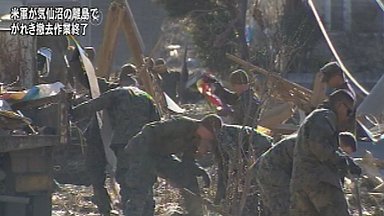
April 6, 2011 23:40 (JST): No. of foreign visitors to Japan tumbles due to quake, nuke emergency - The number of foreign visitors to Japan plunged dramatically in the wake of the March 11 earthquake and tsunami, as well as the ensuing nuclear crisis, data by immigration authorities showed Wednesday. During the period from March 11 to March 31, an average of some 3,400 foreign nationals a day entered Japan via Narita international airport near Tokyo, down 75 percent from the level of March last year, the Tokyo Regional Immigration Bureau said. In Osaka, some 1,700 people on average arrived at Kansai International Airport daily from March 18 to March 23, down more than 50 percent from the level before the earthquake, according to data by the Osaka Regional Immigration Bureau. (Source: Kyodo News)
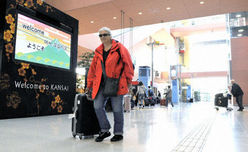
April 6, 2011 17:05 (JST): U.S. Sees Array of New Threats at Japan's Nuclear Plant - United States government engineers sent to help with the crisis in Japan are warning that the troubled nuclear plant there is facing a wide array of fresh threats that could persist indefinitely, and that in some cases are expected to increase as a result of the very measures being taken to keep the plant stable, according to a confidential assessment prepared by the Nuclear Regulatory Commission. Among the new threats that were cited in the assessment, dated March 26, are the mounting stresses placed on the containment structures as they fill with radioactive cooling water, making them more vulnerable to rupture in one of the aftershocks rattling the site after the earthquake and tsunami of March 11. More...
April 6, 2011 12:45 (JST): Fishermen: Utility's actions in Japan nuclear crisis 'unforgivable' - Japanese fishermen have taken the offensive in their fight against the owner of the stricken Fukushima Dai-ichi power plant, angrily calling the utility's actions insulting, incompetent and "unforgivable" over the course of the weeks-long nuclear crisis, CNN reports. The National Fishery Corporative Joint Association, a trade group for Japan's fishing industry, issued a scathing statement on Wednesday just hours after meeting with officials from the Tokyo Electric Power Company, which runs the crippled plant. In it, the group demanded that the utility and Japanese government "compensate all parties (that have) indirectly or directly suffered" as a result of the situation, according to CNN. More...
April 6, 2011 9:25 (JST): U.S. aircraft carrier completes mission under Operation Tomodachi - The U.S. aircraft carrier Ronald Reagan has completed its relief mission under Operation Tomodachi (friends) that the U.S. military began after the March 11 quake in northeastern Japan, a U.S. Navy 7th Fleet official said Tuesday. The U.S. military will maintain its assistance operations using the amphibious assault vessel Essex and other craft, and continue delivering relief supplies to affected people in the aftermath of the quake, the official said. The nuclear-powered aircraft carrier, alongside with its two escort ships, departed from waters off the northeastern coastline of the Japanese archipelago after Defense Minister Toshimi Kitazawa visited it Monday to express his gratitude to U.S. servicemen. (Source: Kyodo News)
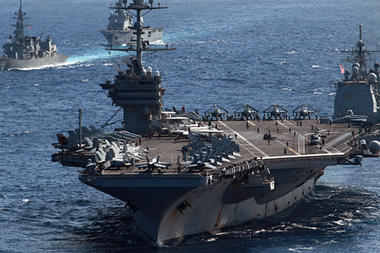
April 6, 2011 6:25 (JST): Iwate brewer urges holding cherry blossom parties with Tohoku-made sake - While a mood of voluntary self-restraint is spreading following last month's deadly earthquake and tsunami, an official of a Japanese sake brewery in Iwate Prefecture has asked people to go ahead and hold cherry blossom viewing parties with sake made in disaster-hit areas. Kosuke Kuji, 38, executive director of Nambu Bijin, a sake brewing company in Ninohe which was damaged in the March 11 disaster, has posted a video message on the YouTube website, asking people to support the disaster-ravaged Tohoku region in northeastern Japan by consuming alcohol products from the region at such parties. (Source: Kyodo News)
April 6, 2011 1:10 (JST): Fukushima measuring radiation at all schools - Fukushima is measuring radiation levels at all elementary and junior high schools and child care centers in the prefecture. This is in response to dozens of calls to the prefectural government every day from parents concerned about the effects of the damaged Fukushima Daiichi nuclear power plant. On Monday, the government announced that radiation of more than 10 millisieverts had been detected at one location in Namie Town, some 30 kilometers northwest of the plant. The figure is what a person would be exposed to if they stayed outdoors for 11 consecutive days at the location. (Source: nhk.or.jp)
April 5, 2011 11:40 (JST): Sensors stopped Shinkansen trains before quake - East Japan Railway says its Shinkansen bullet trains were able to put on their emergency brakes seconds before the March 11th earthquake, thanks to its early detection system. JR East had 27 Shinkansen trains operating in northeastern Japan at the time of the quake, but all of them stopped without derailing. The company had set up 9 seismographs along the Shinkansen tracks and the Pacific coast. On the day of the quake, at 2:47 PM, a seismograph in Miyagi Prefecture 50 kilometers from the tracks detected ground acceleration of 120 gals, which is the benchmark for stopping train operations. (Source: nhk.or.jp)
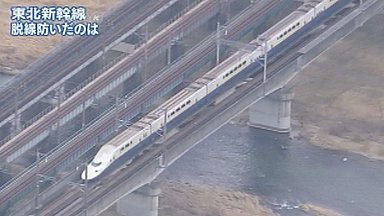
April 5, 2011 16:40 (JST): Sendai Airport to partially resume domestic flights by end of April - The transport ministry is aiming to have Sendai Airport, which was submerged by a tsunami following a massive earthquake last month, partially resume domestic flight operations by the end of this month, a senior ministry official said Tuesday. Koichiro Ichimura, parliamentary secretary for the Land, Infrastructure, Transport and Tourism Ministry, expressed hope at a press conference in Sendai that the operations will be partially resumed before the Golden Week holidays from late April to early May to make it easier for volunteers and others to visit disaster-hit areas. (Source: Kyodo News)
April 5, 2011 10:20 (JST): Closed popular Tokyo hotel to shelter evacuees from Sat. - The Tokyo metropolitan government said Monday the Grand Prince Hotel Akasaka, an upscale hotel that closed down last week, will accommodate evacuees from the areas hit by the massive March 11 earthquake and tsunami from Saturday for free of charge. The hotel in downtown Tokyo will serve as a facility with 700 rooms for up to 1,600 evacuees, including those from Fukushima Prefecture, until June 30, with the Tokyo government bearing electricity and other costs of about 200 million yen. (Source: Kyodo News)
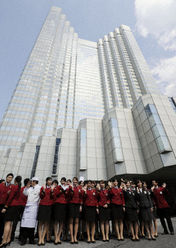
April 5, 2011 5:30 (JST): Toyota likely to halt all output operations in N. America - Toyota Motor Corp. is highly likely to halt all manufacturing operations at its factories in North America later this month due to parts supply disruptions caused by the March 11 earthquake disaster in Japan, company officials said Monday. Toyota has already halted overtime production and operations on Saturdays at its North American plants following the disaster, but has been continuing to operate using existing inventories during normal hours. The automaker has apparently judged that continuing production during normal hours would be difficult as parts manufacturers in Japan have been lagging behind in recovering output. (Source: Kyodo News)
April 5, 2011 1:15 (JST): Japan confirms death of 19 foreigners in March 11 quake, tsunami - Japan has confirmed the deaths of 19 foreigners in the devastating March 11 quake and tsunami that struck eastern and northeastern Japan, a senior Foreign Ministry official said Monday. The dead were nationals of China, Canada, South and North Korea, Pakistan, the Philippines, Taiwan and the United States. Japanese police have notified bereaved families and respective diplomatic missions, the official said. Several dozen foreigners, mainly Chinese and South Korean nationals, remain missing following the twin disasters, the official said. It is difficult to distinguish non-Japanese from Japanese during the process of identifying bodies, he added. (Source: Kyodo News)
April 4, 2011 21:25 (JST): Rescued dog back with owner after drifting at sea 3 weeks - A dog rescued from a roof drifting on the sea off earthquake and tsunami-hit Kesennuma, Miyagi Prefecture, was returned to its owner Monday. After watching a TV news report on the rescue, the owner of the female dog visited the animal care center where she was being looked after, to take her back. ''We'll never let go of her,'' the owner was quoted as saying by a center official, while the dog happily wagged her tail when the owner appeared. (Source: nhk.or.jp) (see original story below)

April 4, 2011 20:07 (JST): Japanese defense chief thanks U.S. military for humanitarian efforts - Japanese Defense Minister Toshimi Kitazawa expressed his gratitude to members of the U.S. military aboard the U.S. carrier Ronald Reagan on Monday for their involvement in search and other relief efforts in the aftermath of the March 11 earthquake and tsunami. Kitazawa said to about 2,000 U.S. personnel in the ship's hanger, relaying Prime Minister Naoto Kan's message, ''All of the disaster-struck people and Japanese people were touched by the hard work exhibited by U.S. troops in rescue efforts.'' (Source: Kyodo News)
April 4, 2011 9:45 (JST): 190,000 buildings damaged by March 11 quake - Japan's National Police Agency says more than 190,000 buildings were destroyed or partially damaged by the earthquake and tsunami on March 11th. The agency said on Sunday that nearly 29,500 structures in Miyagi Prefecture, 12,500 in Iwate Prefecture and 2,400 in Fukushima Prefecture were destroyed. A total of 45,700 buildings in 9 prefectures were destroyed. (Source: nhk.or.jp)
April 4, 2011 0:35 (JST): Radiation levels gradually decreasing - Radiation levels on the ground have gradually decreased or have stabilized in many locations around the Fukushima Daiichi nuclear plant. Experts say these readings do not pose a threat to human health. The highest reading in Fukushima City, 65 kilometers northwest of the plant, was 2.56 microsieverts per hour on Sunday morning, and 2.28 microsieverts per hour in Koriyama City, to the west of the plant. These are higher figures than the normal levels of 0.04 to 0.06 microsieverts per hour. (Source: nhk.or.jp)
April 3, 2011 22:05 (JST): Miyako City hit by 37.9-meter (~124 ft.) tsunami on March 11 - Japanese scientists say that a tsunami nearly 38 meters high hit a coastal city in Iwate Prefecture after the earthquake on March 11th. University of Tokyo Associate Professor Yoshinobu Tsuji and his team conducted a survey of tsunami damage in the Taro district of Miyako City. They found that the tsunami reached a height of 37.9 meters about 200 meters inland. This is the highest tsunami to be triggered by the March 11th earthquake. Japan's largest tsunami of 38.2 meters struck another coastal city in the same prefecture in 1896. (Source: nhk.or.jp)
April 3, 2011 17:32 (JST): Gov't says several months may be required before radiation leaks stop - The government expects that several months may be required before radioactive particles stop being released from the Fukushima Daiichi nuclear plant, its top spokesman said Sunday. ''If we apply methods considered to be normal, I believe that it will be something like that,'' Chief Cabinet Secretary Yukio Edano told a news conference, when asked whether at least several months would be required before the plant crippled by the devastating March 11 earthquake and ensuing tsunami is brought under control. (Source: Kyodo News)
April 3, 2011 10:45 (JST): San Diego high school students to send cheer to Japan quake victims - More than a thousand students from Mt. Carmel High School in San Diego gathered on Friday en masse at the school's gymnasium to record a video message to the victims of the March 11 catastrophic earthquake and ensuing tsunami in Japan. The students acted sincerely in front of the camera, cheering from the top of their lungs the Japanese word, ''ganbare,'' meaning ''you can do it.'' The video shows the students holding a banner reading in Japanese, ''We are with you,'' ''hope'' and ''you can do it.'' They also repeatedly called out the word ''ganbare.'' The video, which will be edited and trimmed to several minutes, is expected to be posted on the video sharing site YouTube sometime next week. (Source: Kyodo News)
April 3, 2011 10:20 (JST): Riverside residents work to aid sister-city Sendai - In Riverside, California, Sendai's oldest sister city, city hall and the International Relations Council (IRC) are coordinating fundraising as locals start their own initiatives. As of Saturday afternoon, the city had gathered more than $320,000, including $100,000 from the city's own coffers. The city will solicit more donations directly with mailers to be included in utility bills. The Sendai-Riverside relationship began when a group of Japanese university women brought bouquets to U.S. soldiers hospitalized in Sendai in 1951. One soldier was from Riverside, and his mother then established a scholarship program which brought a Sendai woman to study in the United States. (Source: Kyodo News)
April 3, 2011 1:41 (JST): Radioactive water continues to leak into sea - Highly radioactive water continues to leak into the sea through a crack in a pit at the troubled Fukushima Daiichi power plant, despite ongoing work to pour concrete into the pit to stop the leakage. The plant operator, Tokyo Electric Power Company, found water between 10 and 20 centimeters deep in the pit on Saturday morning. The pit is located near the water intake of the No. 2 reactor and contains power cables. The surface of the water in the pit was found to have a radiation level of over 1,000 milisieverts per hour. To fill in the crack in the pit, the utility firm began pouring in concrete at 4:30 PM on Saturday. (Source: nhk.or.jp)
April 2, 2011 18:05 (JST): Miracle dog rescued from roof of house drifting at sea 3 weeks after quake - The Japan Coast Guard has rescued a dog from a roof of a house drifting in waters about 1.8 kilometers off Kesennuma City, in Miyagi Prefecture. The dog seems to have spent 3 weeks on the roof since the March 11th quake and tsunami hit his home. Using a small boat, rescue team members approached the dog and one of them jumped into the sea and managed to catch the dog. It is a middle-sized brown dog with black ears, and has a collar. When moved to a patrol boat, the dog looked weak and lay down. But later it was able to get up and to eat sausages and cookies. The dog recovered enough to wag its tail and lick the face of a crew member. The coast guard is looking for the dog's owner. (Source: nhk.or.jp)
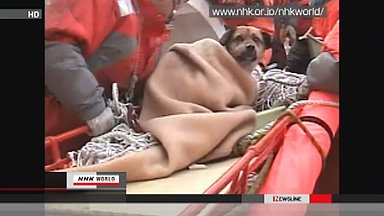
Miracle dog drifting at sea rescued 3 weeks after quake
April 2, 2011 15:55 (JST): Neighborhood watch groups form in disaster-torn regions - Residents in the Horikiri district of Onagawa, Miyagi recently started patrolling their neighborhood, which is located on higher ground and suffered relatively less damage than lower areas in town. The neighborhood watch was formed after leader Yoshiaki Okumura, a 37-year-old self-employed man, saw a band of young people wandering around after the quake and tsunami ravaged the town, he said. The voluntary watch group initially drew several people and has grown to around 15. Groups similar to Okumura's have also formed elsewhere after residents were alarmed by reports of valuables stolen from collapsed homes or gasoline siphoned from abandoned cars dislodged by the tidal waves. (Source: Kyodo News)
April 2, 2011 11:55 (JST): Clint Eastwood's "Hereafter" pulled from Japanese cinemas - The earthquake and tsunami of March 11 have affected nearly every industry in Japan. Although they hardly seem a concern as the scope of the destruction continues to be understood, the domestic and international movie industries are no exception. Hollywood news site "The Wrap" reported that the international market for American films was down 60% the weekend after the disaster, as many theaters were closed. The Clint Eastwood film "Hereafter", which includes a re-creation the 2004 Asian tsunami, was pulled from 180 theaters around Japan after Warner Entertainment deemed its continued showing as "not appropriate." In a statement, Eastwood said: "The devastation and loss Japan is facing is almost incomprehensible. I'm glad to join Warner Bros. in this effort to help the Japanese people." (Source: Metropolis.co.jp)

Clint Eastwood movie, "Hereafter"
April 2, 2011 9:46 (JST): Empire State Building, iconic towers to be lit up for quake-hit Japan - New York City's Empire State Building and other iconic towers around the world will be illuminated white and red at sunset Monday in a sign of support for Japan following the devastating March 11 earthquake and tsunami, the building's management company said Friday. Participants joining the 443.2-meter tower in lighting up in the colors of Japan's national flag until the early hours of Tuesday include Sky Tower in Auckland, New Zealand, Menara KL in Kuala Lumpur, Malaysia, North Tower in Seoul, South Korea, and China's Macau Tower, according to the company which conceived the plan. The participating towers will start their illuminations at their respective local times of sundown Monday, it said. (Source: Kyodo News)
April 2, 2011 9:25 (JST): Tokyo gov't seeking cherry viewers' self-restraint, drawing criticism - The Tokyo metropolitan government has asked visitors to its parks to voluntarily refrain from holding parties under blooming cherry trees, in the Japanese seasonal tradition of ''hanami,'' in light of the March 11 quake and tsunami and power shortages, drawing some criticism for excessive restraint. At Ueno Park, one of the major beauty spots in Tokyo whose roughly 1,200 cherry trees draw more than 1.5 million visitors each season, some 30 signs put up by the Tokyo government read ''We ask for voluntary restraint on parties within the park in the wake of the earthquake.'' Similar signs are visible also at suburban Inokashira Park, home to some 500 trees. (Source: Kyodo News)
April 2, 2011 3:41 (JST): Russian orphans fold 1,000 paper cranes for quake-hit Japan - A group of orphans living in a childcare facility near Moscow visited the Japanese Embassy in Russia on Friday to deliver 1,000 paper cranes they folded to pray for the children of quake-hit northeastern Japan. Five children from the orphanage Young Guard in Vnukovo visited the embassy and gave the cranes to a minister, Keiji Ide. The orphanage is home to 49 children. They have heard about the story of Sadako Sasaki, a Japanese girl who was sickened by her exposure to radiation in the 1945 atomic bombing of Hiroshima and kept folding paper cranes to pray for her recovery. The orphans were inspired to fold the cranes when they saw television footage of the earthquake disaster, they said. (Source: Kyodo News)
Third week updates continued here: Strongest Ever Japan Earthquake and Tsunami, News updates for Mar. 26-April 1, 2011
More Japan quake/tsunami news updates...
Strongest
Ever Japan Earthquake and Tsunami
(last updated page)
News updates for May 28-June 3, 2011 (12th week)
News updates for May 21-27, 2011 (11th week)
News updates for May 14-20, 2011 (10th week)
News updates for May 7-13, 2011 (9th week)
News updates for April 30-May 6, 2011 (8th week)
News updates for April 23-29, 2011 (7th week)
News updates for May 28-June 3, 2011 (12th week)
News updates for May 21-27, 2011 (11th week)
News updates for May 14-20, 2011 (10th week)
News updates for May 7-13, 2011 (9th week)
News updates for April 30-May 6, 2011 (8th week)
News updates for April 23-29, 2011 (7th week)
News updates for April 16-22, 2011 (6th week)
News updates for April 9-15, 2011 (5th week)
News
updates for April 2-8, 2011
(4th week)
News
updates for Mar. 26-April 1, 2011
(3rd week)
News
updates for Mar. 19-25, 2011
(2nd week)
News updates for Mar. 12-18, 2011 (original page - 1st week
after Mar. 11, 2011 quake)
News updates for Mar. 12-18, 2011 (original page - 1st week
after Mar. 11, 2011 quake)

